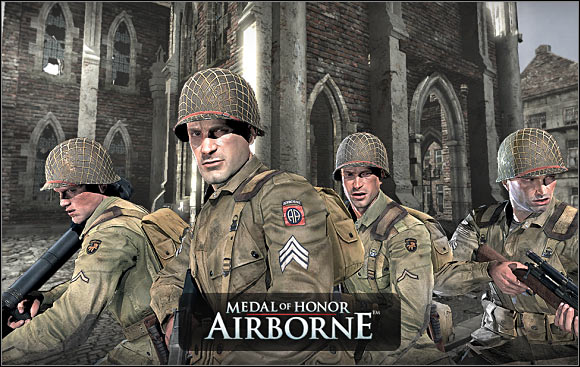
Allison, Tanine. 2010. “The World war II Video Game, Adaptation, and Postmodern History.” Literature Film Quarterly 38, no. 3: 183-193. Academic Search Premier, EBSCOhost (accessed May 16, 2014).
Review by: Brian Elmore
In the world of video games, the genre of games often tends to go in phases just like movies. For example, the zombie craze has probably almost come to an end of a phase lately, but during this phase game developers and movie/tv producers have put out numerous games, movies, tv shows, etc. that are zombie themed. This goes for the World War II phase as well. As Allison Tanine writes about the way the video game trend seemed to follow the movie trend in her article “The World War II Video Game, Adaptation, and Postmodern History”.
Tanine explained how both facets of entertainment seemed to make the war seem like the “last good war” (Tanine, 183). The video games and movies seem to glorify World War II. Tanine also goes into how the video game shapes the cultural viewpoint on the war more so than the movies due to how interactive the games have become. This cultural shift to be pro-American is huge and has made the war in the European theater more acceptable.
The first person shooter was developed via World War II with the start of the Wolfenstein series. This was a very loosely based game on World War II, where an American GI goes into a Nazi castle trying to eliminate the Nazis. This has the player playing from a first person viewpoint, so the player only sees the hands and weapons that they are using. This opened up a whole new path for the Medal of Honor and Call of Duty series to explore.
Medal of Honor starts off with the landing on D-Day which seemed to mimic the scenes in Saving Private Ryan. Tanine explains how the video game, although it is very similar to the movie, provides a whole new experience for the audience (Tanine, 184). This is very true since the movie is not as interactive as the game is. The first person shooter development provides the best way for the player to understand how the war was without actually being there.
Finally, the games seemed to focus more on the European theater due to two reasons. First was the racial tensions, so the Nazis were able to be demonized while those in the Pacific theater, such as the Japanese, were not allowed to be demonized. The second was the availability of iconic structures in Europe. The Pacific theater was mainly jungle and forests making it hard for the audience to become familiar with the layout, while the European theater allows for the audience to relate to the layout easier.
To conclude, World War II has become a gold mine for the video game world. The war has allowed for multiple games to be developed and has also improved the view of the war in the cultural mainstream. Tanine’s article provided many aspects as to how the war affected mass media, not just video games. Call of Duty and Medal of Honor are just a couple examples of how influential the war has become.